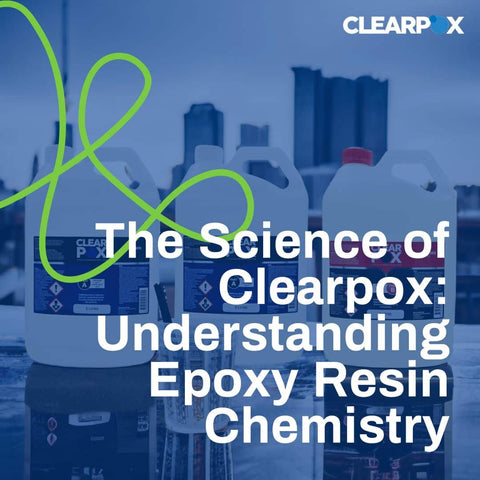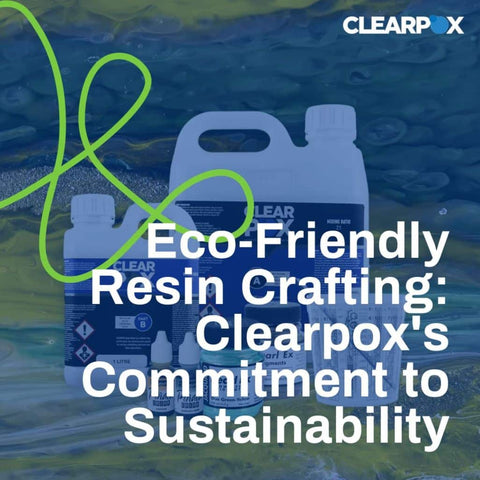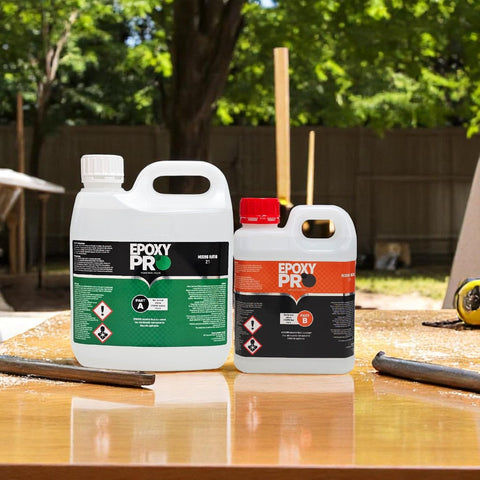The material has exceptional properties, making it versatile. It is a thermosetting polymer that cures and hardens when mixed with a curing agent or hardener.
 Epoxy Resin: An Overview.
Epoxy Resin: An Overview.
Understanding its chemistry is vital for manipulating its properties and behaviour effectively. The cross-linked network structure of cured epoxy provides outstanding adhesion, chemical resistance, and mechanical strength to various substrates. Its adaptability allows for customisation with additives, fillers, or reinforcements to enhance specific properties or tailor it for particular applications.The curing process of resin is influenced by factors such as temperature, humidity, mixing ratio, and curing time, impacting the rate and completeness of the reaction. Adhering to product instructions and comprehending the epoxy system's requirements is crucial for achieving optimal cure and performance.
Its chemistry, encompassing molecular structure, curing processes, and inherent properties, is a captivating field that empowers engineers, researchers, and manufacturers to unlock its potential and innovate across diverse applications.
Versatile Applications in Various Industries.
Epoxy is a type of thermosetting polymer with a wide range of applications across various industries that are created through the polymerisation of epoxide groups. This results in a structural network that exhibits exceptional strength and durability.The primary reason for the popularity of this resin is its excellent adhesive properties. It forms strong bonds with a variety of materials, including metals, glass, ceramics, wood and plastics. This capability makes it an invaluable tool in the following applications:
| Industry | Examples |
| Construction | They are useful in strengthening and fortifying structural parts, such as flooring materials, engineering adhesives, and paints. |
| Renewables | Paints, coatings and parts. |
| Electronics | Electric and high-tension electrical insulators. |
| Automotive | Epoxy-based carbon fibre car parts. As well as coatings and primers. |
| Marine | Composite-based structures and parts such as yacht hulls, canoe structures, paddles, etc., including protective coatings. |
| Aerospace | Composite structures such as glass fibre and carbon. |
| Space | Structures and parts including coatings. |
It serves as a highly effective adhesive and sealant, offering remarkable resistance to water, chemicals, abrasion, and various physical stressors. Particularly renowned for its exceptional chemical resistance, it is extensively utilised in industries like oil and gas, chemical processing, and automotive, providing crucial protection against corrosion and chemical damage.
Beyond its inherent properties, the resin can be modified to exhibit specific characteristics, enhancing its versatility in applications. The introduction of additives and fillers, such as those for strength, colouration, or fire resistance, allows for tailored adjustments to meet specific requirements.
Chemical Composition of Clearpox Resin.
Clearpox’s epoxy resin is a high-quality material known for its exceptional clarity, performance and versatility. Its chemical composition is carefully formulated to ensure its consistency, strength, and reliability in various applications.Epoxide Resins.
At the core of this fast-curing and colourless resin is an epoxide compound, serving as the backbone for its chemical structure. This compound is known for its excellent strength, durability, and resistance to wear and tear, excellent water and chemical resistance, and mechanical properties with excellent adhesion to a variety of substrates delivering exceptional performance and long-lasting results.Hardening Agents.
To achieve the desired strength and durability, our hardening agent plays a crucial role in the chemical reaction that occurs during the curing process, transforming the liquid epoxy into a solid, rigid material. Our hardener (Part B) is manufactured in Germany, giving us our unique, quality point of difference. Compared with other hardeners, ours is formulated to have less yellowing under UV rays.The components typically require proper mixing and precise measurement of resin and hardener in the correct ratio to achieve proper curing and the desired results. By volume, our recommended mixing ratio is 2:1.
Fillers and Additives.
You can tailor our resin by adding fillers like silica, glass fibres, or microspheres for improved mechanical properties, enhanced adhesion, or minimising shrinkage. Incorporate additional additives like UV stabilisers or flame retardants to meet specific industry standards or customised requirements.Quality and Precision.
Our formulation is a point of pride, crafted with top-grade materials and stringent quality controls for consistently high performance. With a well-balanced chemical composition, it delivers exceptional strength, versatility, and durability across industrial, construction, and artistic applications, making it the preferred choice for professionals and DIY enthusiasts alike.Clearpox’s Unique Features.
Our resin distinguishes itself in the market through its unique chemical composition that offers exceptional characteristics, making it an optimal choice across diverse applications. Notable features include crystal-clear transparency, addressing the common issue of yellowish or amber tint found in traditional resins, making it ideal for applications requiring visual appeal and high gloss.Additionally, we prioritise environmental sustainability with its low Volatile Organic Compound (VOC) content, minimising its impact on both human health and the environment. The resin also excels in UV resistance, preventing degradation or discolouration when exposed to sunlight, making it reliable for outdoor applications like furniture coatings and boat components.
Further, Clearpox demonstrates outstanding chemical resistance, catering to industries requiring resilience to harsh chemicals, such as laboratory equipment coatings. Its enhanced flexibility and impact resistance make it an ideal choice for durable applications like flooring and automotive components.
Moreover, our resin can be cured within 24 hours at ambient temperature and fully cured within 7 days, which positions it as a valuable option for time-sensitive projects or those demanding quick turnarounds.
Curing Process Explained.
Our resin treatment involves a chemical reaction process, transforming liquid resin into a hard, durable material. Understanding these reactions is crucial for proper curing, ensuring the desired physical properties of the cured resin.During polymerisation, individual molecules cross-link to form a three-dimensional network, facilitated by a hardener that accelerates the process. This curing agent interacts with resin molecules, forming chains that connect and create a network structure. Proper curing is essential in professional projects to maximise the resin's strength and durability, ensuring the desired results.
- Strength and durability – Proper curing ensures that the resin reaches its maximum strength, durability and forms a strong bond and adheres to the substrate. This results in a sturdy and long-lasting finished product.
- Chemical resistance – Properly cured resin exhibits excellent chemical resistance, density, and impermeable properties. This is important for professional projects where the end product may be exposed to harsh environmental conditions or chemicals.
- Heat and temperature resistance – It is frequently needed for professional applications since it can tolerate high temperatures and thermal variations. Proper curing is required to guarantee it can withstand circumstances without warping, splitting, or losing its structural integrity. Properly cured resin produces a thermally stable finish, resistant to drastic temperature changes without sacrificing functionality.
- Appearance and finish – The aesthetics of the final product is another crucial aspect of professional projects. Proper curing plays a significant role in achieving a smooth, flawless, and bubble-free finish that meets the desired standards.
- Time and efficiency – Resin systems with shorter curing times can reduce the overall project timeline, allowing for faster completion, and optimising the working time and pot life of the resin without rushing or risking incomplete curing.
Durability and Strength.
Our two-part epoxy system ensures the durability and strength of resin through a chemical reaction when its resin and hardener components are mixed. This process forms a robust, cross-linked polymer structure during curing, providing exceptional resistance to physical impacts, chemical exposure, temperature changes, and UV radiation.The cured resin exhibits tensile, compressive, and flexural strength, making it capable of withstanding significant loads and forces, with good adhesion to various surfaces. Additionally, it offers excellent water and moisture resistance, a crucial feature for applications exposed to wet or humid environments.
Real-World Application Examples.
It can be tailored for use in various industries, ensuring that it can meet the unique demands and requirements of each sector. With our deep understanding of epoxy chemistry, we can deliver high-quality solutions for the following:| Industry | Application | Chemistry Contribution |
| Cabinet Making | High gloss finish | Precise formulation enhances clarity and adhesion, resulting in a flawless, high-gloss finish. |
| Boat Building | Water-resistant coating | Provides superior water resistance, ensuring long-lasting protection against the elements. |
| Professional Renovation | Durable countertop surfaces | Chemistry contributes to its unmatched durability, making it ideal for creating resilient countertop surfaces. |
| Plumbing | Leak-proof pipe sealing | Its adhesive properties and water resistance make it an excellent choice for creating leak-proof seals in plumbing applications. |
| Flooring | Scratch-resistant coatings | Robust coatings can resist scratches and abrasions, maintaining the integrity of flooring surfaces. |
| Landscaping | Decorative outdoor structures | Its strength and weather resistance ensure that it can withstand outdoor elements. |
| Professional Artistry | Crystal clear art resin | The resin’s clarity and low yellowing preserve the vibrancy and integrity of works of art. |
| Electronics and Electricals | Protective coatings | Excellent electrical insulation provides high-temperature stability, mechanical strength, and moisture resistance. |
These are just a few examples that demonstrate the diverse range of applications where epoxy resin can be an indispensable material for various innovative solutions.
Tips for Optimal Usage.
To maximise the benefits of Clearpox Ultra Clear Premium Epoxy Resin, you must take into account its chemical composition and use a specific method. Here are some of our expert tips for the best use of epoxy:- Recognise the Chemical Composition: It is a two-part system comprising the resin and hardener. To ensure optimal curing and performance, it is crucial to understand the chemical composition and follow the recommended mixing ratios outlined in our product datasheet and instructions.
- Appropriate Measurement and Mixing: To get the best results, precise measurement and careful mixing are necessary. Use accurate measuring tools like digital scales or graduated mixing cups.
- Manage Humidity and Temperature: Extreme temperatures can affect the resin's final appearance and curing process. Optimal curing conditions are achieved at ambient temperatures, and to maintain ideal conditions, consider using a dehumidifier or a temperature-controlled space when necessary.
- Control Air Bubbles: Air bubbles can mar the surface of a resin project. Mix the two components slowly and thoroughly to minimise the formation of bubbles.
- Appropriate Ventilation: Always work in an area with good ventilation. If at all possible, use a ventilation system. Even after the resin has dried, make sure the area is well-ventilated to avoid any long-term health hazards.
- Surface Preparation: For optimal adhesion and a flawless finish, ensure proper surface preparation by clearing debris, oil, and dust. If necessary, lightly sand the surface to enhance adherence through a mechanical bond.
Follow this expert advice to achieve exceptional outcomes and maximise the benefits of resin in your projects.
Storage, Mixing, and Application Techniques.
Proper storage, mixing and application techniques are essential to achieve good results when working with resin. By following these guidelines, users can ensure the best performance and longevity of their epoxy projects.Storage.
Store it in a cool, dry place away from direct sunlight and extreme temperatures to prevent quality degradation and premature curing. Ensure tightly sealed containers to minimise air and moisture exposure, consider transferring unused resin to smaller containers and always check the expiration date before use. Cured resin offers exceptional water and moisture resistance, making it ideal for applications in wet or humid environments.Mixing.
Accurate measurement is essential for achieving desired curing and performance properties when working with resins. Use a graduated mixing cup or digital scale for precision.Combine resin and hardener in a clean container, stirring slowly and consistently while scraping the sides and bottom to ensure a thorough blend. While our resin minimises the formation of bubbles, gentle stirring and avoidance of unnecessary agitation can help further. If bubbles do appear, allow the mixture to rest briefly and use a heat gun or torch to carefully eliminate any visible bubbles.
Application.
Prepare surfaces thoroughly by removing dirt, oil, and contaminants, and consider factors like ambient temperature and humidity during application, as these influence the curing process. Choose the application method — brushing, rolling, or pouring — that best suits your project and desired outcome, each offering unique advantages and considerations.Curing and Drying Time.
Give the resin ample time to cure, with a 24-hour initial cure and full curing within 7 days. While heat accelerates curing, avoid excessive heating to preserve resin properties. To enhance efficiency and durability, adhere to proper storage, mixing, and application procedures. Always consult the manufacturer's instructions, and refer to our FAQ or knowledge database for optimal results.In Conclusion.
Clearpox epitomises excellence in clear resin solutions, exceeding industry standards through our commitment to crafting ultra-clear premium epoxy resin with a meticulously designed chemical composition. Tailored to meet the specific demands of professionals, whether a cabinet maker pursuing a flawless high-gloss finish or a boat builder in need of water-resistant coatings, our range aligns with diverse industry needs.When making bulk purchasing decisions, professionals invest not just in resin but in a formula backed by precision and innovation. The chemistry of our resin is the cornerstone of exceptional performance, influencing attributes like clarity, durability, and adhesion. By understanding the technical nuances, professionals can make informed choices that precisely meet the unique requirements of their industrial applications.
Explore Clearpox's range today, where cutting-edge chemistry meets the challenges of professional projects, ensuring your bulk orders result in nothing short of excellence.



